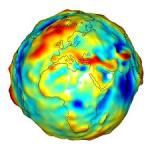
Tuesday, October 29th, 2013
The objective of this column is to observe world events surfacing on the daily news, focusing the attention on geotechnology and on the way it affects the functioning of world systems. The area of analysis is the intersection between technology, news, business and the digital world, where geospatial issues are more current and better measurable

Tuesday, October 22nd, 2013
To borrow a phrase from Mark Twain, reports of the demise of aerial film in our industry are greatly exaggerated. The transition to digital imaging technologies in the geospatial industry may seem ubiquitous, but the numbers tell a very different story. Film is very much alive, and numerous base mapping collection firms have not yet
Wednesday, October 9th, 2013
Geoinformation plays a pivotal role in many areas – at INTERGEO, the world’s leading conference trade fair for geodesy, geoinformation and land management, more than 500 exhibitors from 30 countries and some 1,300 international experts will be considering the current status and future of the solution-focused geo-industry. “INTERGEO trains the spotlight on key socio-political issues”,

Thursday, October 3rd, 2013
The work of the 6th International Conference “Earth from Space – the Most Effective Solutions” is over. It took place on October 1-3 in Moscow Region “Vatitunki” resort hotel and brought together more than 400 representatives of state and municipal government, commercial, educational, scientific and educational and environmental organizations from 28 world countries.

Tuesday, September 24th, 2013
Part one of this series described an imagined future scenario of pizza deliveries made using unmanned aerial systems (UAS). This is hardly a stretch given Americans’ history of extraordinary innovation. The level of innovation with UAS technology promises to be breathtaking. Since Part 1 was published, I have found real life examples of similar UAS

Thursday, September 12th, 2013
It is hard to go anywhere now and not see individuals or whole crowds of people staring at their “device”. I was walking past an outdoor café the other day and noticed that every single person on the patio was engaged in texting, searching and scanning. No one was talking. It is pretty obvious

Monday, August 5th, 2013
The advent of Earth-observation satellites transformed how we view our planet—from occasional snapshots to near continuous, comprehensive, and real-time coverage. Likewise, the advent of cabled sensor networks on the sea floor is beginning to provide scientists and the public with a continuous flow of data, including video streams, that will revolutionize our understanding of

Monday, July 29th, 2013
You order a pizza for delivery. Later your cell phone rings and the voice says “your pizza is at the door”. You reach out and remove the pizza from the unmanned aerial drone, it retrieves payment from your NFC-enabled device, gives you a receipt, and flies off.

Monday, July 15th, 2013
A lot has changed in the geospatial industry since I started my career back in the early 1980s. GIS software today has a level of sophistication that we could have only dreamed of back then. Digital technology and the Internet have transformed how we do business and how customers utilize imagery. And the geospatial industry

Monday, June 17th, 2013
This feature originally appeared in the inaugural issue of Apogeo Spatial magazine (formerly Imaging Notes). According to a recent United Nations report, stresses on water supplies aggravated by climate change are likely to cause more conflicts, and water should be considered as vital to national security as defense. The report points out that 145 countries